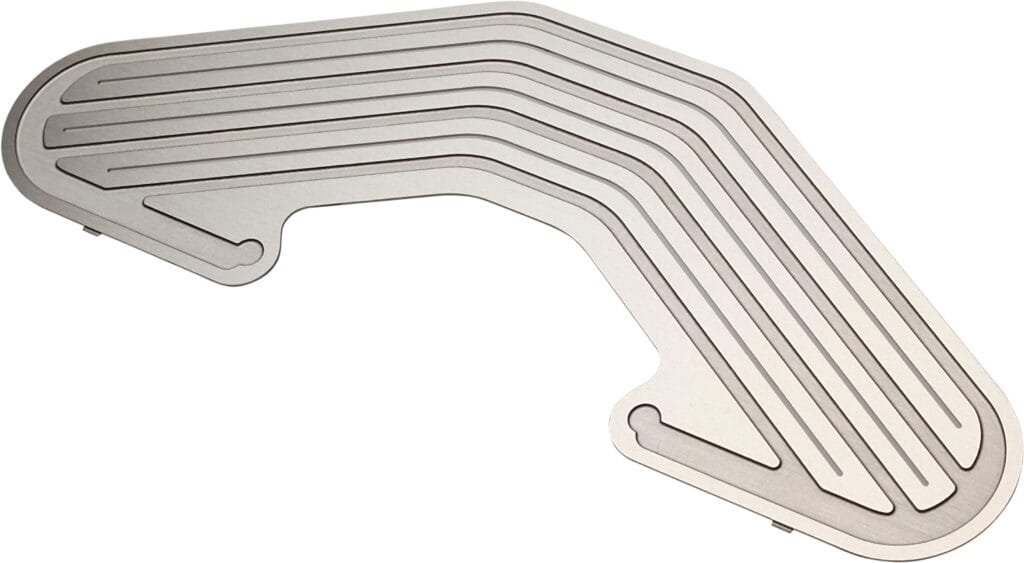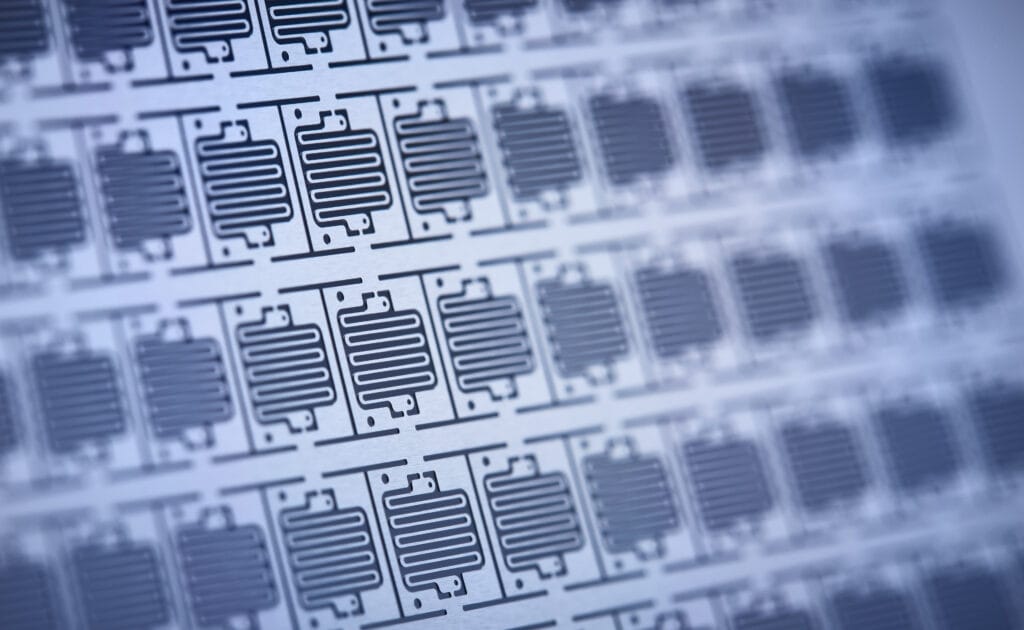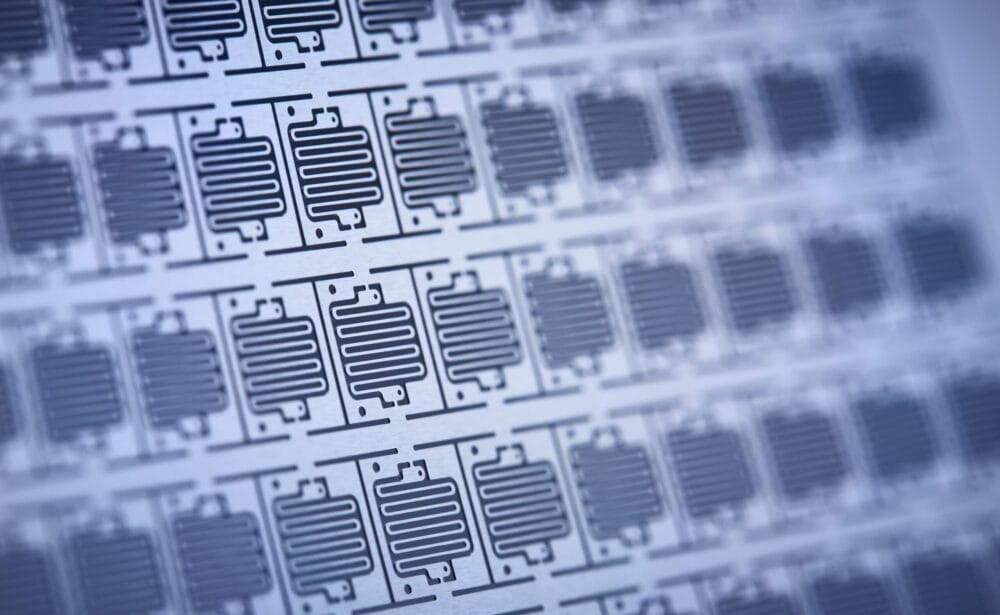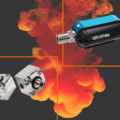Jochen Kern, Head of Sales & Marketing, micrometal
The photochemical etching (PCE) process is distinguished by its capacity to fabricate metal parts with unparalleled accuracy. This process sidesteps the typical stresses and deformations linked to conventional metalworking, like stamping or laser cutting, which can compromise material integrity. Such fidelity is crucial in the manufacture of components for thermal management systems, where material integrity and component precision are non-negotiable for ensuring effective heat creation or dissipation. PCE’s ability to craft parts with smooth, burr-free edges and exact dimensions means heat management components work more effectively, bolstering the reliability and extending the service life of micro electronic devices.
One of the most significant advantages of the PCE process is its extraordinary flexibility in handling a wide array of metals and alloys. This adaptability is crucial for the production of bespoke thermal management solutions that are specifically tailored to meet the unique requirements of various micro electronic devices. By accommodating different metals, PCE allows for the customisation of components to align with distinct thermal properties and constraints of the devices they are designed for. This means that heat sinks, TIMs, and other critical components can be engineered to optimise heat dissipation for each specific application, from smartphones to high-powered computing systems. The precision afforded by PCE ensures that these customised solutions fit seamlessly into the devices, enhancing their performance and durability. The ability to quickly switch between materials and designs without the need for extensive retooling is a further benefit, reducing lead times and costs.
As portable micro electronic devices evolve, becoming more compact yet more powerful, the demand for proficient thermal management escalates. PCE meets this challenge by enabling the production of components that effectively manage heat, while conforming to the trend of device miniaturisation. In this way, the PCE process supports the move towards sleeker electronic devices by allowing for the creation of small, complex components that fit into tight spaces without compromising on thermal management efficacy. This is essential as the electronics industry continues to place a premium on the compactness of devices. In addition, PCE’s design flexibility also ensures that thermal management solutions keep pace with the swift advancement in electronic technology, offering a scalable solution for future needs.
The PCE process presents substantial economic advantages as well, enhancing its attractiveness for manufacturing precise metal components for thermal management solutions. PCE’s efficiency comes from the fact that it is streamlined production process, which involves fewer steps. Also, the use of wear-free photo-tools extend the lifespan of production equipment, while the process’s ability to produce large volumes of parts ensures consistent quality without the cost of frequent tool replacement. PCE’s scalability makes it a versatile choice for industries seeking sustainable and cost-effective manufacturing solutions.
PCE’s influence extends beyond production — it catalyses innovation within the micro electronics sector. As the industry relentlessly drives towards further miniaturisation and enhanced performance, PCE provides the tools necessary to realise these ambitions. PCE not only facilitates the present requirements but also anticipates future demands, establishing itself as a pivotal technology in the advancement of micro electronic device design and functionality. Its role in the progression of micro electronics will likely continue to grow, underscoring the importance of adaptive and advanced manufacturing techniques in the tech landscape.

A cooling plate made via photo chemical etching
PCE & THERMAL MANAGEMENT – CASE STUDIES
Micro heating management involves the precise control and distribution of heat at a micro-scale level in various applications, utilising components like micro heating elements (providing localised heat), heat exchangers (facilitating efficient heat transfer), and cooling plates (dissipating heat to maintain optimal operating temperatures). These components are essential in applications requiring fine thermal control, such as in micro electronic devices, medical equipment, and specialised industrial processes.
Micro Heating Elements
Manufacturing micro heating elements as used in PCR equipment and e-cigarettes present a set of intricate challenges, one of the major challenges being ensuring precision and uniformity in temperature distribution. Another issue is the selection and processing of suitable materials for micro heating elements, as they typically need to be able to withstand high temperatures and thermal cycling without degrading. Additionally, as devices become more compact, their internal components, including heating elements, need to be smaller and more complex.
This miniaturisation adds another layer of complexity to the manufacturing process, which traditional methods find challenging to meet. PCE offers a range of advantages in this context as it allows for the creation of components with high precision and uniformity, which is essential for consistent heat distribution in micro heating elements. It doesn’t induce stress in materials, helping to maintain their integrity and properties — a crucial factor for components that are exposed to high temperatures. PCE is also adept at producing intricate components, and is extremely cost-effective, especially when it comes to mass production. The process can be scaled easily, making it suitable for mass production without compromising on quality. Additionally, the ability to rapidly prototype with PCE allows for quicker design changes and innovation, a significant advantage in fast-paced industries.
Heat Exchangers
Manufacturing micro precision heat exchangers means achieving intricate and accurate channel geometries essential for efficient heat transfer, and managing the mechanical and thermal stresses that conventional machining methods can introduce. In traditional manufacturing processes, metal is often pressed to create the desired geometry and flow channels for heat exchangers, which can be time-consuming, expensive, and may cause material stress or burrs that require additional post-machining work.
PCE is exceptionally well-suited for manufacturing micro precision heat exchangers as it is capable of producing complex components with fluidic channels — such as plate heat exchangers — with high precision. One of the key advantages of the process is that it eliminates mechanical and thermal stresses typically associated with traditional pressing methods, and allows for low-cost, quickly adaptable digital tooling, making it ideal for optimising designs at minimal cost. PCE can achieve precision microchannels with consistent accuracy, enhancing the compactness and efficiency of heat transfer. It is also compatible with a range of materials, including stainless steel, aluminium, titanium, and Inconel, which are often challenging to process using conventional methods. The scalability and versatility make photochemical etching an advantageous choice for both prototyping and high-volume production of heat exchangers.

Micro heating elements made via photo chemical etching
Cooling Plates
Manufacturing micro precision cooling plates is difficult due to the intricacy and accuracy of the cooling channels and the overall dimensional precision of the plates. One significant challenge is ensuring uniformity and precision in the micro-scale features critical for effective heat dissipation. Traditional machining methods might introduce mechanical stresses or deformities, compromising the efficiency of the cooling plates. Additionally, achieving the high level of detail necessary for micro channels, which are essential for efficient heat transfer, is often time-consuming and expensive using conventional methods. The complexity of design and the need for high precision in such small scales add to the manufacturing difficulties.
PCE is well-suited for producing micro precision cooling plates due to its ability to create intricate, detailed designs with high precision and consistency. This process allows for the fabrication of complex patterns and microstructures in metals, crucial for the effective performance of micro cooling systems. The etching process ensures uniformity in component thickness and avoids introducing stresses or deformities, vital for the functionality and longevity of cooling plates.
SUMMARY
The PCE process efficiently manufactures precise metal parts for thermal management in micro electronic devices, ensuring high accuracy without stress or deformation. It handles diverse metals, creating tailored thermal solutions like heat sinks and TIMs for everything from smartphones to powerful computers. As devices shrink, PCE produces the necessary small, detailed parts, aiding device miniaturisation. Economically, it cuts costs and lead times with a simplified process while enabling scalable production. PCE’s precision is vital in micro heating elements and cooling systems, allowing for complex, micro-precise components that bolster device performance and thermal management.








